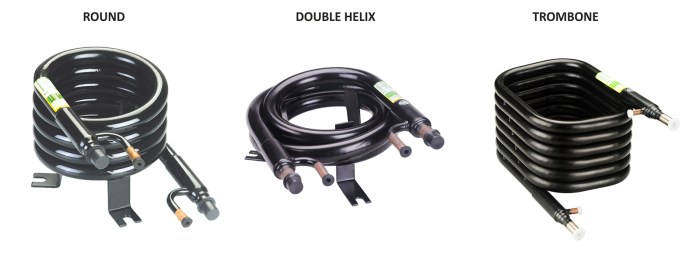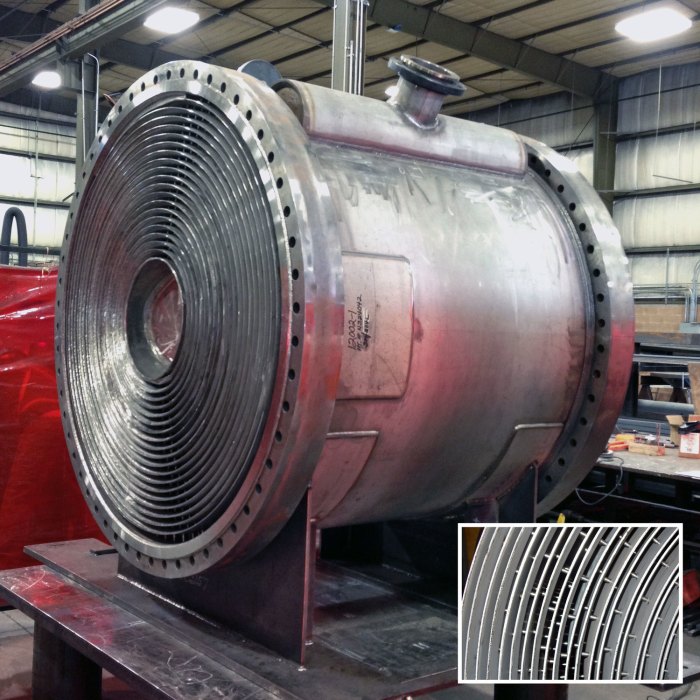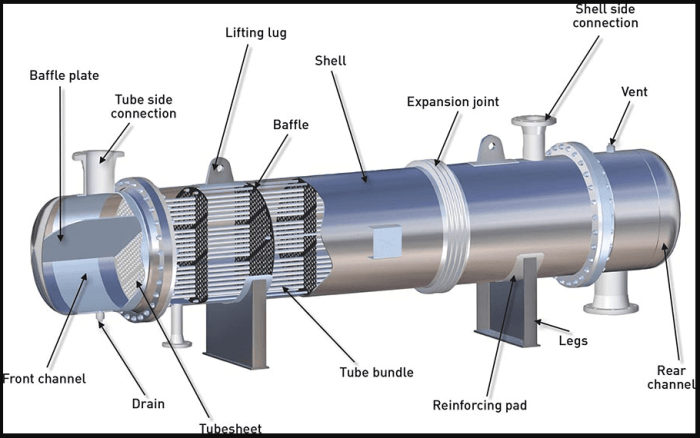Many coaxial heat exchangers are made of various materials and employ different manufacturing processes to achieve optimal performance in diverse applications. This article delves into the materials used, manufacturing processes involved, and key considerations for designing, evaluating, maintaining, and troubleshooting coaxial heat exchangers.
Coaxial heat exchangers, characterized by their nested cylindrical configuration, offer numerous advantages in various industries, including enhanced heat transfer efficiency, compact size, and adaptability to specific application requirements.
Materials Used in Coaxial Heat Exchangers

Coaxial heat exchangers are typically constructed using a variety of materials, each with its own advantages and disadvantages. The choice of materials is influenced by factors such as temperature, pressure, corrosion resistance, and cost.
Metals
- Stainless steelis a common choice for coaxial heat exchangers due to its excellent corrosion resistance and mechanical strength. It is suitable for use in a wide range of temperatures and pressures.
- Copperhas high thermal conductivity and is relatively inexpensive. However, it is susceptible to corrosion in certain environments.
- Titaniumis a strong and lightweight material with excellent corrosion resistance. However, it is more expensive than stainless steel and copper.
Non-metals
- Polypropyleneis a lightweight and inexpensive material with good chemical resistance. However, it has a lower thermal conductivity than metals.
- Polyethyleneis a flexible and durable material with good chemical resistance. It is often used in low-pressure applications.
- Ceramicmaterials have excellent corrosion resistance and thermal conductivity. However, they are brittle and can be expensive.
Manufacturing Processes for Coaxial Heat Exchangers

Coaxial heat exchangers can be manufactured using a variety of processes, each with its own advantages and disadvantages.
Tube-in-tube
In the tube-in-tube process, one tube is inserted into another tube. The inner tube carries the hot fluid, while the outer tube carries the cold fluid. The tubes are sealed at one end, and the other end is left open for fluid flow.
Double-pipe
In the double-pipe process, two tubes are placed concentrically. The inner tube carries the hot fluid, while the outer tube carries the cold fluid. The tubes are sealed at both ends, and fluid flow is maintained by a pressure differential between the two tubes.
Shell-and-tube
In the shell-and-tube process, a bundle of tubes is placed inside a shell. The hot fluid flows through the tubes, while the cold fluid flows through the shell. The tubes are sealed at one end, and the other end is left open for fluid flow.
Applications of Coaxial Heat Exchangers

Coaxial heat exchangers are used in a wide variety of industries and applications, including:
Heating and cooling
- Coaxial heat exchangers are used to heat or cool water, air, and other fluids in residential, commercial, and industrial applications.
Condensation and evaporation, Many coaxial heat exchangers are made of
- Coaxial heat exchangers are used to condense or evaporate gases and vapors in industrial processes.
Chemical processing
- Coaxial heat exchangers are used to heat or cool chemicals in a variety of chemical processing applications.
Design Considerations for Coaxial Heat Exchangers: Many Coaxial Heat Exchangers Are Made Of
The design of a coaxial heat exchanger is critical to its performance. Key design parameters include:
Tube diameter
The diameter of the tubes affects the heat transfer rate and the pressure drop. Smaller tubes have a higher heat transfer rate, but they also have a higher pressure drop.
Tube length
The length of the tubes affects the heat transfer rate and the pressure drop. Longer tubes have a higher heat transfer rate, but they also have a higher pressure drop.
Tube spacing
The spacing between the tubes affects the heat transfer rate and the pressure drop. Closer spacing increases the heat transfer rate, but it also increases the pressure drop.
Fluid flow rate
The flow rate of the fluids affects the heat transfer rate and the pressure drop. Higher flow rates increase the heat transfer rate, but they also increase the pressure drop.
FAQ Section
What are the common materials used in coaxial heat exchangers?
Common materials include stainless steel, copper, aluminum, and titanium, each offering advantages such as corrosion resistance, high thermal conductivity, and durability.
How are coaxial heat exchangers manufactured?
Manufacturing processes include extrusion, welding, and brazing, with each method offering unique benefits in terms of cost, efficiency, and material compatibility.
What are the key design considerations for coaxial heat exchangers?
Key design considerations include fluid flow rates, temperature differences, pressure drop, and heat transfer surface area, which influence the overall performance and efficiency of the heat exchanger.